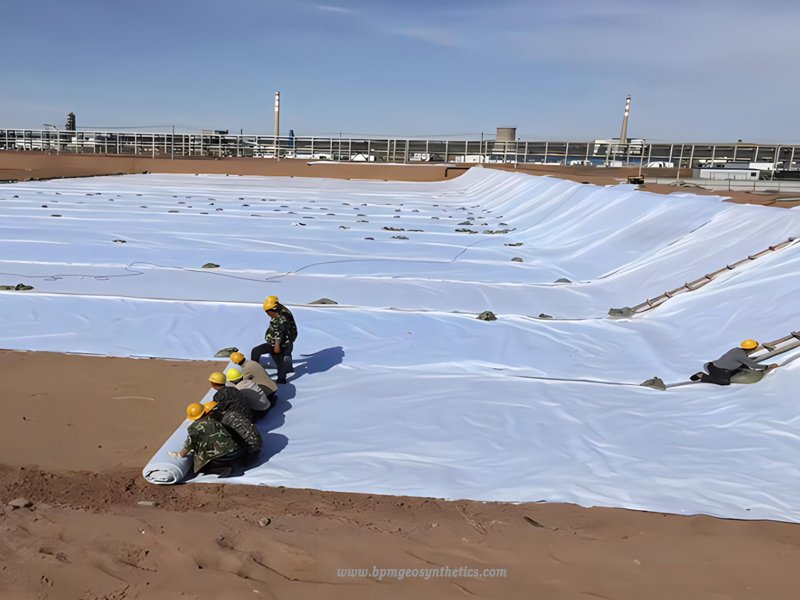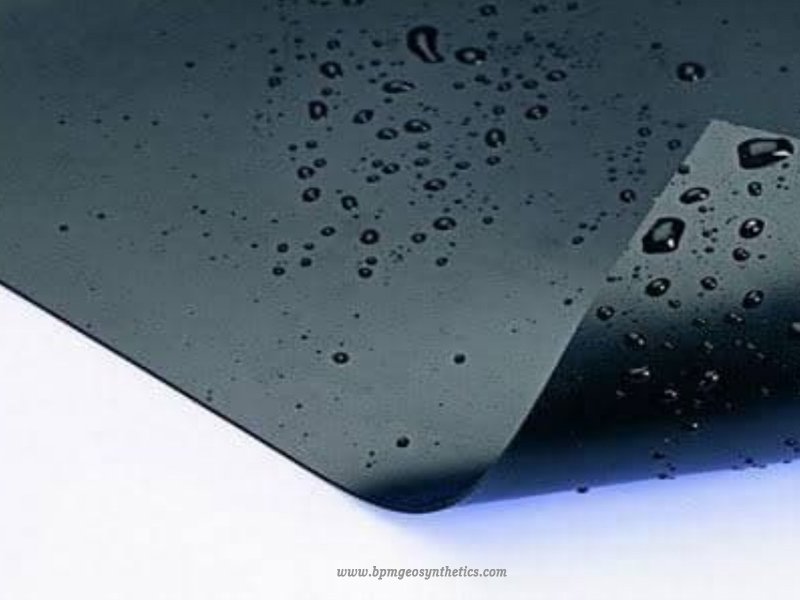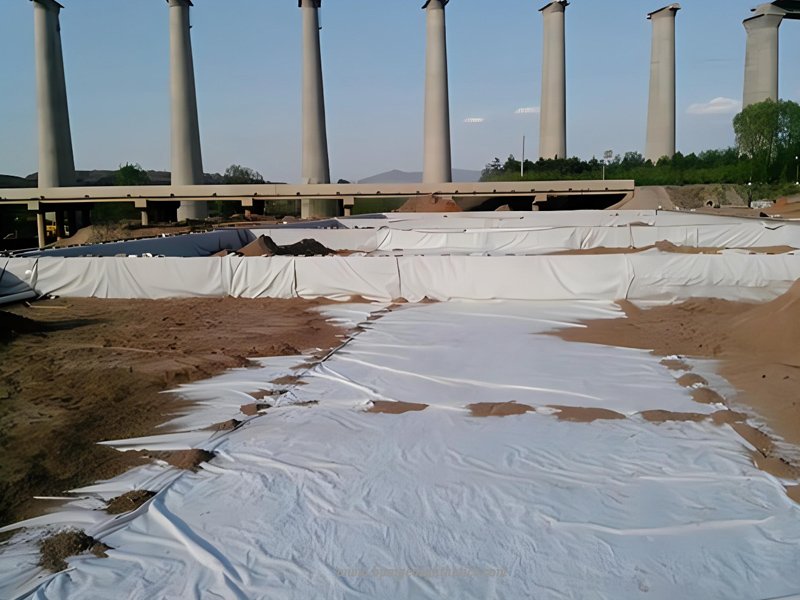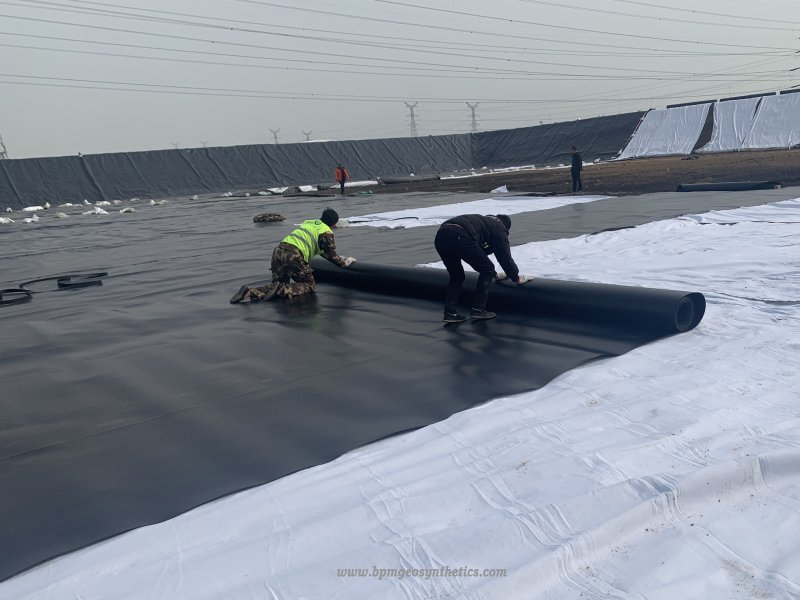Geosynthetic materials such as geotextile and geomembrane play crucial roles in engineering and construction applications. Geotextile and geomembrane are widely used due to their effectiveness in addressing soil-related challenges. While both serve similar purposes, they possess distinct characteristics that make them suitable for different applications.
But What is The Difference of Geotextile vs Geomembrane? How to Choosing the Right Geosynthetic Material? BPM Geosynthetics is the leading manufacturer and supplier of geotextile and geomembrane, in this article we will delve into the differences of geotextile vs geomembrane, exploring their materials, types and functions.
1. Introduction of Geotextile vs Geomembrane
1.1 What is Geotextile
Geotextile is a type of geosynthetic material that is commonly used in geotechnical and civil engineering applications. It is made up of synthetic fibers, typically polyester or polypropylene, which are woven or non-woven to create a mesh-like structure.
Geotextiles serve various functions in geotechnical projects. They are primarily used for separation, filtration, drainage, reinforcement, and erosion control purposes. The mesh-like structure of geotextiles allows water to pass through while preventing the mixing of different soil layers. This helps in maintaining the stability and integrity of the soil structure.
In civil engineering, geotextiles are often employed in road construction, retaining walls, landfills, erosion control, coastal protection, and drainage systems. They can be used to enhance soil stability, prevent soil erosion, improve filtration, and provide reinforcement to weak soil areas.
1.2 What Is A Geomembrane?
Geomembrane is synthetic membranes that are designed and used in geotechnical and environmental engineering applications. They are utilized as impermeable barriers to prevent the seepage or migration of fluids, gases, or contaminants in various construction and containment projects.
Geomembranes are typically made from materials such as high-density polyethylene (HDPE), low-density polyethylene (LDPE), polyvinyl chloride (PVC), or ethylene propylene diene monomer (EPDM). These materials offer excellent durability, chemical resistance, and impermeability properties.
Geomembranes are employed in a wide range of applications, including landfill liners and caps, wastewater treatment ponds, reservoirs, mining facilities, agricultural ponds, and containment systems for hazardous waste storage. They act as a protective barrier to prevent the contamination of soil and groundwater, as well as to control fluid or gas migration.


2. What Is Difference of Geotextile and Geomembrane
2.1 Different Raw Materials
Geotextile is made from synthetic fibers, Polypropylene (PP) and Polyester (PET). PP geotextile is lightweight, strong, and resistant to biological degradation. PETgeotextile has high tensile strength, dimensional stability, and UV resistance.
While geomembrane is made from various materials, including High-Density Polyethylene (HDPE), Low-Density Polyethylene (LDPE), Polyvinyl Chloride (PVC), and Ethylene Propylene Diene Monomer (EPDM).
2.2 Different Types
There are various types of geotextiles and geomembranes used in engineering and construction projects. Here are some common types:
Geotextiles types:
Woven Geotextiles: Woven geotextiles are made by weaving synthetic fibers together.
Non-Woven Geotextiles: Non-woven geotextiles are manufactured by entangling synthetic fibers through mechanical, thermal, or chemical processes.
Staple Fiber Geotextiles: Staple fiber geotextiles are made by bonding short synthetic fibers together.
Composite Geotextiles: Composite geotextiles are a combination of different types of geotextiles or geotextiles with other materials such as geomembranes.
Geomembrane Types:
Geomembrane can be classified differently according to different characteristics. According to geomembrane surface characteristics divided into the following types.
Smooth Geomembranes: Smooth geomembranes have a flat and smooth surface without any textural patterns.
Textured Geomembranes: Textured geomembranes have a patterned or embossed surface. The texturing provides increased friction and improved interface shear resistance.
Composite Geomembranes: Composite geomembranes consist of multiple layers, typically combining a geomembrane with a geotextile or other geosynthetic materials.
2.3 Different Water Permeability
Geotextile is permeable. It has varying degrees of water permeability, which is tailored to the specific design and intended use. Geotextile is typically engineered to allow water to pass through while retaining soil particles. This permeability enables geotextile to facilitate functions such as water drainage, filtration, and soil stabilization.
In contrast, geomembrane is impermeable. It is specifically designed to be impermeable or have extremely low permeability. Geomembrane serves as effective barriers to prevent the seepage or containment of liquids, gases, and other substances. Geomembranes are meticulously engineered to offer a high level of impermeability, ensuring they effectively isolate and safeguard underlying soils and structures from water penetration.
2.4 Different Applications
Geotextile is primarily used for soil filtration and reinforcement purposes. It is designed to allow water to pass through while preventing the migration of soil particles. Geotextile is commonly used to stabilize soils, control erosion, separate different soil layers, and provide drainage in various construction applications. which is used in roads, railways, water conservancy, large buildings, power plant ash dam construction, non-ferrous metal tailings treatment, environmental protection engineering, soil and water conservation, etc.
On the other hand, Geomembrane is primarily used for waterproofing, anti-seepage, and isolation purposes. It is impermeable membranes designed to prevent the seepage or containment of liquids, gases, and other substances. Geomembrane is used to line containment structures, such as landfills, ponds, reservoirs, and tunnels, to create a barrier against leaks and protect the surrounding environment from contamination


3. How to Choosing the Right Geosynthetic Material: Geotextile vs Geomembrane?
The selection of the appropriate geosynthetic material, whether it be geotextile or geomembrane, for a specific project depends on various factors. These factors include the intended application, site conditions, and desired performance characteristics.
Geotextile is commonly chosen when the main objectives are soil stabilization, erosion control, and filtration. Its permeability and filtration capabilities make it ideal for projects that require effective management of water flow while preventing soil loss. Geotextile acts as a barrier that allows water to pass through while retaining soil particles, making it useful in applications such as road construction, slope protection, and drainage systems.
In contrast, geomembrane is the preferred option when impermeability and water containment are crucial. Its primary function is to prevent water seepage, making it invaluable for applications where leakage control is of utmost importance. Geomembranes are commonly used in projects such as reservoirs, landfills, containment systems, and wastewater treatment ponds. They act as impermeable barriers, ensuring that fluids, gases, or contaminants do not penetrate the surrounding environment.
The choice between geotextile and geomembrane depends on the specific project requirements and goals. It is essential to assess factors such as water flow, soil conditions, potential contaminants, and desired performance characteristics to determine the most suitable geosynthetic material for the job. By selecting the appropriate material, the project can achieve its intended objectives effectively and efficiently.
4. Summary
Geotextile and geomembrane are both crucial geosynthetic materials that serve distinct functions and utilize different materials. Geotextile is particularly effective in soil stabilization, erosion control, and filtration due to its porous structure and composition of synthetic fibers. In contrast, geomembrane offers impermeability and functions as a reliable water barrier, ensuring efficient containment and isolation. Having a clear understanding of the disparities between geotextile and geomembrane empowers engineers, contractors, and project managers to make well-informed decisions when selecting the most appropriate material for their specific requirements.
Any questions or inquiries, please contact us.





